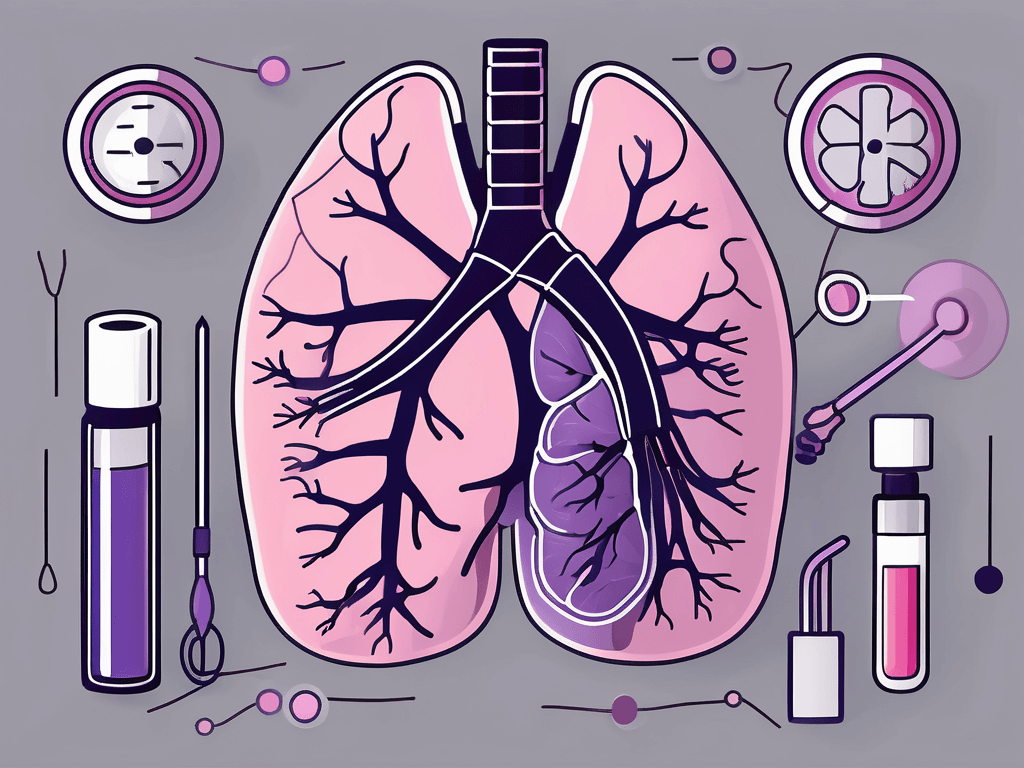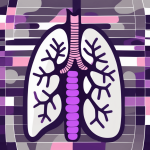Lung mesothelioma, a rare cancer affecting the pleura, is primarily caused by asbestos exposure. This article provides an in-depth exploration of the disease, elucidating its causes, symptoms, and treatment options. Understanding the anatomy of the lungs and pleura, along with the various types of lung mesothelioma, aids in comprehending its complexities. Early symptoms, advanced manifestations, diagnostic procedures, and treatment modalities are discussed, emphasizing the importance of early detection and multidisciplinary intervention for improved outcomes.
Lung mesothelioma is a rare form of cancer that affects the lining of the lungs, known as the pleura. This type of cancer is primarily caused by exposure to asbestos, a toxic mineral commonly used in construction materials and industrial products during the mid-1900s. It is important to understand the causes, symptoms, and treatment options for lung mesothelioma to ensure early detection and effective treatment.
What is Lung Mesothelioma?
Before delving into the causes and symptoms of lung mesothelioma, it’s essential to understand what this disease entails. Lung mesothelioma is a malignant tumor that develops in the pleura, which is a thin layer of tissue that covers the lungs. This cancer usually develops due to prolonged exposure to asbestos fibers, although other risk factors may also contribute.
Defining Lung Mesothelioma
Lung mesothelioma is a type of cancer that primarily affects the pleura, but it can also spread to other areas of the body. There are three main types of lung mesothelioma: epithelioid, sarcomatoid, and biphasic. Each type has distinct characteristics and may respond differently to treatment options.
The Anatomy of the Lungs and Pleura
To better understand lung mesothelioma, it’s crucial to have a basic understanding of the anatomy of the lungs and pleura. The lungs are vital organs responsible for oxygenating the blood and removing carbon dioxide. The pleura consists of two layers: the inner layer (visceral pleura) covers the lungs, and the outer layer (parietal pleura) lines the chest wall and diaphragm.
The visceral pleura is a delicate membrane that adheres to the surface of the lungs, providing a protective covering. It is composed of a thin layer of mesothelial cells, which are specialized cells that secrete a lubricating fluid. This fluid allows the lungs to move smoothly within the chest cavity during breathing.
The parietal pleura, on the other hand, lines the chest wall and diaphragm. It is thicker and more fibrous compared to the visceral pleura. The parietal pleura also contains blood vessels, lymphatics, and nerve endings that supply the pleural cavity.
When asbestos fibers are inhaled, they can become lodged in the pleura, causing inflammation and scarring over time. This chronic irritation and damage to the mesothelial cells can eventually lead to the development of lung mesothelioma.
It’s important to note that lung mesothelioma is a relatively rare form of cancer, accounting for only a small percentage of all lung cancer cases. However, it is highly aggressive and often diagnosed at advanced stages, making it challenging to treat.
In addition to asbestos exposure, other risk factors for lung mesothelioma include genetic predisposition, radiation exposure, and certain industrial or occupational exposures. It can take several decades for symptoms of lung mesothelioma to manifest after asbestos exposure, further complicating early detection and diagnosis.
As research and medical advancements continue, new treatment options and therapies are being developed to improve the prognosis and quality of life for individuals with lung mesothelioma. Early detection, prompt intervention, and a multidisciplinary approach involving oncologists, surgeons, and other healthcare professionals are crucial in managing this complex disease.
The Causes of Lung Mesothelioma
As mentioned earlier, exposure to asbestos is the primary cause of lung mesothelioma. When asbestos fibers are inhaled, they can become lodged in the pleura, causing irritation and inflammation over time. Other risk factors, such as genetic factors and additional environmental exposures, may increase the likelihood of developing this disease.
Exposure to Asbestos
Exposure to asbestos can occur in various settings, including workplaces where asbestos-containing materials are present. Certain occupations, such as construction workers, plumbers, and electricians, have a higher risk of asbestos exposure. Additionally, family members of people who work with asbestos may also be at risk due to second-hand exposure.
Genetic Factors and Lung Mesothelioma
Although exposure to asbestos is the primary cause of lung mesothelioma, genetic factors may also play a role in determining an individual’s susceptibility. Certain gene mutations can increase the risk of developing this disease. Understanding these genetic factors can help with targeted treatment approaches and early detection.
Other Potential Risk Factors
In addition to asbestos exposure and genetic factors, other potential risk factors may contribute to the development of lung mesothelioma. These factors include exposure to radiation, zeolites (mineral fibers related to asbestos), and certain viruses. Researchers continue to study these risk factors to better understand their relationship to the disease.
Recognizing the Symptoms of Lung Mesothelioma
Recognizing the symptoms of lung mesothelioma is crucial for early detection and prompt medical intervention. However, the symptoms of this disease can be subtle and may take years or even decades to manifest, making early diagnosis challenging.
Early Symptoms
In the early stages of lung mesothelioma, individuals may experience symptoms such as persistent cough, shortness of breath, chest pain, and fatigue. These symptoms are non-specific and can often be mistaken for other respiratory conditions, delaying accurate diagnosis. It’s important to be vigilant and seek medical attention if you have a history of asbestos exposure and experience these symptoms.
Advanced Symptoms
As lung mesothelioma progresses, advanced symptoms may develop. These symptoms can include severe chest pain, breathing difficulties, coughing up blood, unexplained weight loss, and swelling of the face and arms. If you experience these symptoms, it is crucial to consult with a healthcare professional immediately to receive a proper evaluation and diagnosis.
Diagnostic Procedures for Lung Mesothelioma
When lung mesothelioma is suspected, a series of diagnostic procedures are used to confirm the diagnosis and determine the extent of the cancer. These procedures involve a combination of imaging tests, biopsy procedures, and blood tests.
Imaging Tests
Imaging tests, such as X-rays, CT scans, and MRI scans, are commonly used to visualize the lungs and identify any abnormalities. These tests help doctors evaluate the size and location of tumors and determine if the cancer has spread to other areas of the body.
Biopsy Procedures
Biopsy procedures are essential for confirming the diagnosis of lung mesothelioma. During a biopsy, a small tissue sample is obtained from the pleura and examined under a microscope. Different types of biopsies, including needle biopsies and surgical biopsies, may be performed depending on the location and size of the tumor.
Blood Tests
Blood tests can help doctors assess the overall health of individuals with lung mesothelioma and monitor their response to treatment. Biomarkers, such as mesothelin-related proteins, may be measured to aid in the diagnosis and prognosis of the disease.
Treatment Options for Lung Mesothelioma
When it comes to treating lung mesothelioma, a multidisciplinary approach is often employed. Treatment options depend on several factors, including the stage and type of the cancer, the individual’s overall health, and their treatment goals. Common treatment modalities for lung mesothelioma include surgery, chemotherapy, radiation therapy, and emerging treatments through clinical trials.
Surgery and its Role in Treatment
Surgery plays a crucial role in the treatment of lung mesothelioma, especially for early-stage cases. Surgical options may involve removing the tumor and affected lung tissue, as well as surrounding lymph nodes. In some cases, pleurectomy/decortication or extrapleural pneumonectomy may be recommended to remove the cancerous tissue and potentially improve outcomes.
Chemotherapy and Radiation Therapy
Chemotherapy and radiation therapy are often utilized in combination or as standalone treatments for lung mesothelioma. Chemotherapy involves the use of drugs to kill cancer cells, while radiation therapy uses high-energy radiation to target and destroy cancer cells. These treatments can help shrink tumors, alleviate symptoms, and improve overall survival rates.
Emerging Treatments and Clinical Trials
Researchers and clinicians are continually exploring new treatment options for lung mesothelioma. Emerging treatments, such as immunotherapy and targeted therapy, are being investigated in clinical trials. These innovative approaches aim to enhance the body’s immune response against cancer cells or specifically target the genetic mutations driving the growth of mesothelioma cells.
In conclusion, understanding lung mesothelioma, its causes, symptoms, and treatment options, is crucial for early detection and effective management. If you suspect you have been exposed to asbestos or experience symptoms associated with lung mesothelioma, seek medical attention promptly. By working closely with healthcare professionals and staying informed about the latest advancements, you can ensure the best possible outcome in your journey towards fighting lung mesothelioma.






